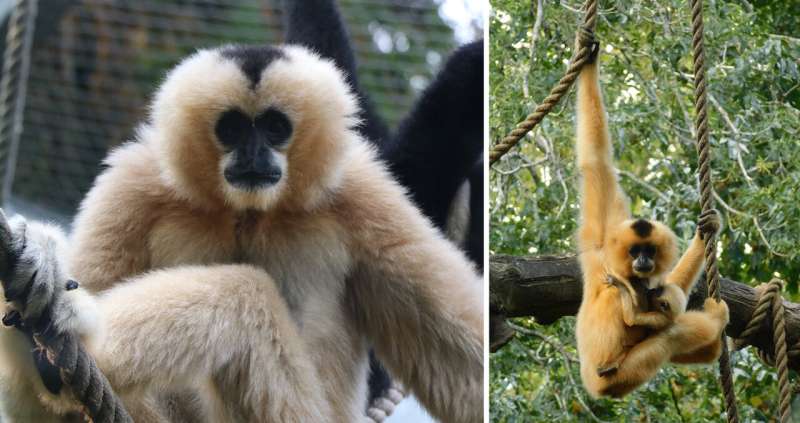Researchers have discovered that female crested gibbons engage in captivating, choreographed dances that offer insights into the use of gestural communication in primates. This study, published in the journal Primates, sheds light on the structure, rhythm, and contexts of these unique dance displays, which may have evolved independently from human dances. The findings suggest these dances serve as a form of intentional visual communication, with similarities and differences to human dance practices.

Discovering the Mesmerizing Dances of Crested Gibbons
Visitors to zoos have likely witnessed the captivating displays of female crested gibbons, which involve intricate, almost geometric patterns of movement. Researchers from Heinrich Heine University Düsseldorf (HHU), Oslo in Norway, and Paris have delved into this unique behavior, studying the structure, rhythm, and contexts in which these dances occur.
The study, published in the journal Primates, reveals that these conspicuous dances are a common and intentional form of visual communication among all species of crested gibbons. The researchers observed that the gibbons often check during their performances to ensure the audience is paying attention, indicating the intentional nature of these dances.
Analyzing the Rhythm and Structure of Crested Gibbon Dances
The researchers have delved deeper into the characteristics of these captivating dances. They have found that the dance movements often display a clear grouping structure, with sequences of up-down or left-right movements that follow a distinct rhythm. The complexity of the movement sequences can vary depending on the individual gibbon.
Interestingly, the researchers have identified similarities between crested gibbon dances and human dances, but they believe these behaviors have evolved independently. This conclusion is based on the fact that other species of apes do not exhibit this type of dance-like behavior, and that gibbon dances are likely to be innate, whereas human dance is primarily influenced by cultural factors.
Furthermore, while human dance is often accompanied by music or song, this is never the case with gibbons. The researchers suggest that the crested gibbon dances serve as a unique form of visual communication, potentially used to solicit copulation or express non-sexual arousal and frustration.
The study highlights the importance of studying these dance-like behaviors in primates to gain a deeper understanding of the evolution and function of gestural communication in our closest evolutionary relatives.
Implications and Future Directions in Primate Dance Research
The discovery of these captivating crested gibbon dances has opened up new avenues for research in the field of primate behavior and communication. The researchers emphasize that this behavior was initially noticed by chance, but is now being reported from various zoos and rescue centers around the world.
By studying the structure, rhythm, and contexts of these dances, the researchers hope to shed light on the evolution and function of gestural communication in primates. This research could also have broader implications for our understanding of the cognitive and social abilities of our closest evolutionary cousins.
As the research continues, it will be interesting to explore whether these dances serve specific functions, such as courtship, social bonding, or even a form of emotional expression. Additionally, comparing the dance behavior of crested gibbons to that of other primate species could reveal insights into the diversity and commonalities of gestural communication across the primate lineage.
Overall, the discovery of these captivating crested gibbon dances has opened up a new frontier in the study of primate behavior, offering a unique window into the evolution and function of intentional, rhythmic body movements in our closest living relatives.
